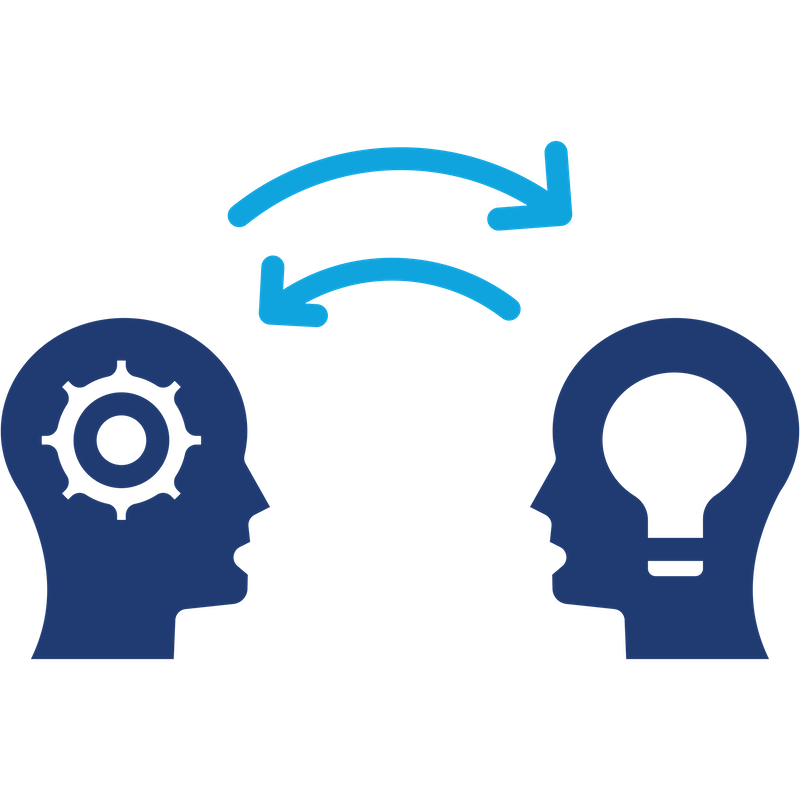Why Content Strategy is the Foundation of AI Implementation
Why Content Strategy is the Foundation of AI Implementation
3 min read
![]() Innovatia Guru
:
Feb 7, 2025 3:00:35 PM
Innovatia Guru
:
Feb 7, 2025 3:00:35 PM

Knowledge management (KM) is the process of capturing, distributing, and effectively using organizational knowledge.
As businesses undergo more robust digital transformation, efficiently managing knowledge becomes critical for operational success and AI integration. A strong knowledge management strategy enhances decision-making, improves collaboration, and drives efficiency. So, what are the four types of organizational knowledge?
Explicit knowledge is existing information that is documented, structured, and easily transferable. Examples include:
As organizations mature, their content management systems should endeavour to capture tacit, implicit, and embedded knowledge into their knowledge bases. A well-organized, comprehensive knowledge base built on a single-sourcing framework reduces redundancy and costs while improving operational efficiency and supporting compliance frameworks.
Tacit knowledge is personal, experience-based knowledge that is difficult to articulate. It includes insights, intuition, and expertise gained through practice. Knowledge capture and transfer from employees exiting their current roles or the organization is essential to today's organizational knowledge management planning. Tacit knowledge is crucial for innovation, problem-solving, and decision-making. It can have profound short- and long-term impacts on a business's ability to operate.
Organizations should be looking at breaking down silos and fostering a culture of knowledge sharing between departments. This can be accomplished by establishing centralized knowledge repositories, knowledge-sharing workshops, and mentorship programs and encouraging documentation practices with tools and templates.
Implicit knowledge refers to knowledge that is not documented but can be inferred from experience and actions. Unlike tacit knowledge, it is easier to transform into explicit knowledge through structured documentation. Where tacit knowledge may take more time to identify and articulate, implicit knowledge is more straightforward to capture and document. Think of implicit knowledge as "Best Practices."
For example, a seasoned operator at a manufacturing plant notices that a particular machine runs more smoothly when the temperature is slightly adjusted during production. They don't consciously think about it—it's just something they've learned over time. The implicit knowledge is that the operator knows the optimal settings for different conditions but has never documented them. To turn this into explicit knowledge, the operator could record these adjustments in an SOP, training manual, or digital knowledge base so future employees can follow them.
When captured, this kind of implicit knowledge can improve efficiency, reduce defects, and help new employees learn faster.
Embedded knowledge is ingrained within systems, workflows, and company culture. It includes standard operating procedures (SOPs), AI-driven automation, and best practices integrated into processes.
An organization's embedded knowledge refers to knowledge built into its processes, systems, culture, and structures rather than being stored in documents or held by individuals. It influences how work is done, often without employees being consciously aware. Unlike tacit knowledge, which is deeply personal, embedded knowledge is part of the organization. It also differs from explicit knowledge, as it isn't always written down but integrated into workflows and norms.
For example, a manufacturing company may have an automated quality control system that flags defective products based on historical data, ensuring consistency without requiring manual oversight. In corporate environments, embedded knowledge is observed in unspoken cultural norms, such as a B2B company's practice of having all client proposals undergo a peer review before being sent out. Similarly, embedded knowledge can take the form of decision-making frameworks, like a bank's risk assessment model, which incorporates best practices into an automated approval process.
Technology often plays a role in embedding knowledge within organizations. A CRM system, for instance, may guide sales reps through a predefined lead nurturing process, ensuring that each prospect receives the same high-quality engagement based on past successful conversions. Likewise, logistics companies optimize efficiency by embedding knowledge into their routing algorithms, using years of operational data to determine the most effective delivery schedules.
Because embedded knowledge is woven into how an organization functions, it is not reliant on an individual. Instead, it persists through processes, structures, and technology. Capturing and refining this knowledge ensures that best practices remain in place even as employees come and go.
Effective organization knowledge management is essential for sustaining competitive advantage, fostering innovation, and ensuring operational efficiency. Organizations can create a continuous learning and improvement culture by understanding and strategically managing the four types of knowledge—explicit, tacit, implicit, and embedded. Implementing robust knowledge-sharing systems, encouraging documentation practices, and leveraging technology to embed best practices into workflows can help businesses minimize knowledge loss, enhance decision-making, and drive long-term success. As companies evolve, a well-structured knowledge management strategy will remain a cornerstone for resilience, scalability, adaptability, and growth.

Why Content Strategy is the Foundation of AI Implementation

“The disappearance of the manual-as-book coincides, moreover, with documented realities about how people actually learn to use new tools and devices....

How long do we stay on a website looking for answers? According to the Nielsen Norman Group, less than 59 seconds. The number one reason for leaving...